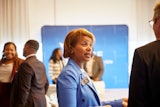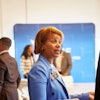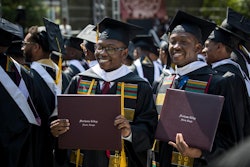Brown v. Board of Education, followed by 20 years of court decisions, federal legislation and regulatory enforcement that pushed open the door of opportunity for African-Americans to attend colleges that had once been inaccessible, has led to significant increases in minorities earning degrees.
These efforts led some to question the need for and the contemporary relevance of HBCUs — institutions that had previously been among the few higher education options for African-Americans.
Today, the questions linger.
An editorial last fall in the Wall Street Journal, for example, asserted that while HBCUs were a necessity at one point because of racism, “The reality today … is that there’s no shortage of traditional colleges willing to give Black students a chance.” Like many who question the relevance of HBCUs, the critique was long on supposition and inference, and short on data and evidence.
To be sure, some HBCUs have appropriately endured criticism centered on low graduation rates, financial challenges, low alumni giving and periodic accreditation difficulties. And yet UNCF (United Negro College Fund) has demonstrated since the 2006 launch of its Institute for Capacity Building that with targeted investment in critical areas, combined with technical assistance and training, some of these same institutions can show marked improvements in enrollment, retention, alumni giving, faculty development and accreditation.
And these improvements are sustained through the establishment of communities of practice via learning institutes and social networking vehicles.
More than a year ago, the Frederick D. Patterson Research Institute, the research arm of UNCF, sought to address such critiques by launching a research agenda, which aimed both to study the challenges that HBCUs face in the 21st century and to make the contemporary case for HBCUs. Its first publication, Students Speak! Understanding the Value of HBCUs from Student Perspectives, funded by the Mellon Foundation, was an interview study of students attending 16 UNCF member HBCUs. It reported a relatively new phenomenon: Whereas a vast majority of previous generations of HBCU students chose them because they wanted to extend their racial majority high school experience, many students who choose HBCUs today come from predominantly White high schools. The students in the latter group want a different milieu to help facilitate both their formal education and their search for racial and ethnic identity.
The UNCF Patterson Research Institute agenda also seeks to understand the larger role HBCUs play in addressing national challenges. Here again, we let the data speak. The Institute is about to release a new report, Historically Black Colleges and Universities: A Vital Resource for a Diverse and Competitive American Workforce, that outlines the role of these institutions in producing workplace- and postgraduate education-ready graduates.
Here are the highlights of the new report:
• Though representing just 4 percent of the nation’s public and private not-for profit four-year institutions, HBCUs enroll 21 percent of African-American college students, and grant 22 percent of all bachelor’s degrees awarded to African-Americans. HBCUs account for more than a fifth of all African- American undergraduates.
• In the all-important STEM fields, HBCUs do even better, conferring 28 percent of STEM bachelor’s degrees, and 34 percent of degrees awarded to African-Americans with majors in physics, chemistry, astronomy, mathematics and biology.
These outcomes, by the way, are not the result of soft grading or social promotion, but are validated at the postgraduate level. According to a recent report by the National Science Foundation, eight of the top 10 colleges whose African-American graduates went on to get Ph.D.s in science and engineering disciplines were HBCUs.
Remarkably, these institutions achieve their successes despite an average student profile that introduces greater challenges to collegiate success. As the report will highlight, HBCUs are three times more likely to educate students from households with annual incomes under $25,000, and willingly accept a population that scores roughly 20 percent lower than their non- HBCU peers at the 75th SAT percentile.
In a job market that increasingly requires postsecondary education as an entry-level requirement, what could be more relevant than HBCUs’ commitment to enrolling students from largely low-income and academically underprepared backgrounds and “overproducing” graduates and doctoral students?
What, then, does the evidence — not the suppositions — tell us? That having produced, over 150 years, generations of leaders who have helped shape the fabric of America, HBCUs stand on as strong a footing today, if not stronger, than they did 40 years ago. Education does not have to be a zero-sum proposition where one type of institution wins and another loses. Rather, with increased policy and financial support for HBCUs, this could be a win-win-win opportunity — America wins, higher education wins and students win. The burden is on those who speak up for HBCUs and their students to let the evidence speak and hope that Americans are listening. D
— Dr. Karl Reid is senior vice president of academic programs and strategic initiatives for the UNCF.


















